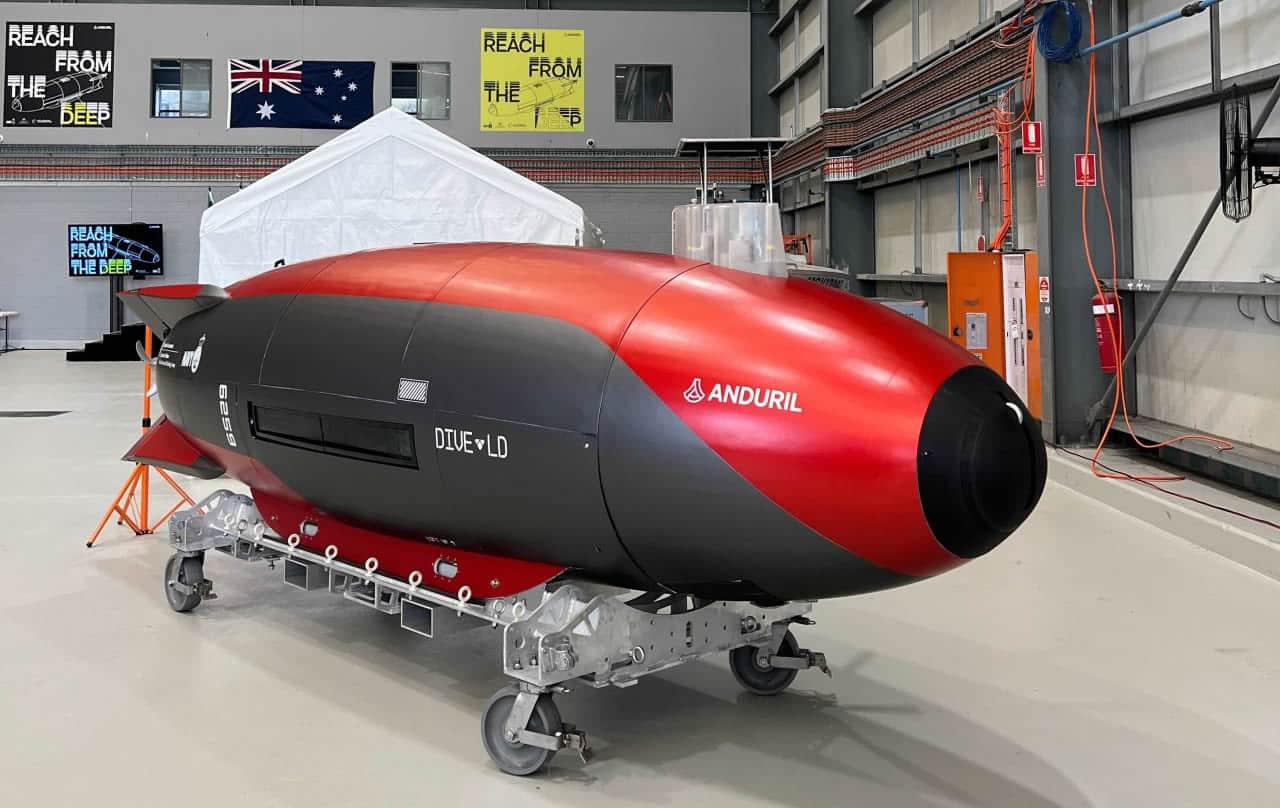
Numerous forward deployed, unmanned, underwater systems “might be the poor man’s version of the nuclear deterrent,” the director general of warfare innovation for the Royal Australian Navy said Thursday.
Capt. Adam Allicia, speaking at a Hudson Institute online event, said these systems “help us get over those long distances” that figure into any Indo-Pacific operation. The idea, he added, “is to rotate them in and out” to maintain at least a persistent presence for deterrence.
The underwater systems “look like a submarine,” but, because they’re not manned, “you can probably take more risks” in how they are employed. “We can take losses without the loss of human life.”
In assessing their immediate use, Allicia said, “they’re probably small, [so] how do we fight with these systems” as well as manned air and surface platforms and submarines? The immediate answer likely harkens “back to the ’50s, ’60s and ’70s – talking to one another.”
Allicia said the RAN has established a central integrating office for surface, subsurface and air experimentation and exercises to understand the risks and limits. “How we’re going to use these robots together is a challenge.”
“We’re obviously an island nation,” he said. Forward-deployed unmanned systems capable of delivering mass effects in addition to providing intelligence, surveillance and reconnaissance data can close “the ocean gap between us and a potential adversary.”
“Reach and persistence [over such] a maritime empire is becoming harder and harder,” Air Commodore Ross Bender, who heads Australia’s air combat capabilities efforts, added. Unmanned systems can make a difference in Canberra’s ability to defend itself and project power in the Indo-Pacific.
Army Brig. Gen. James Davis, who heads Canberra’s joint autonomy efforts, said “autonomy is the only way to bridge the gap in vast geography and population” for Australia to defend itself, particularly on its northern borders. Australia is roughly the size of the lower 48 states and has a population of about 28 million compared to the United States’ 330 million.
Wide-area surveillance is critical to meeting that need, he added. Davis cited the Orius BlueBottle unmanned surface vessel as one step in protecting trade routes and marine resources. Two of the five vessels ordered have been delivered.
In the panel discussion of where Canberra’s military falls in the high-technology part of of the Australia-United Kingdom-United States [AUKUS] agreement, Emily Hilder, interim head of advanced strategic capabilities, said, in unmanned systems and innovation generally, “we’re only going after something where there is an identifiable problem” discovered by the operators.
“This gives us a better chance [of solving] a wicked problem,” she added.
Davis, director general of future land warfare, said the question often asked is: “How much do you want to spend on guidance systems [or] is it numbers,” for mass effects on an enemy that is the goal. “Cost is a factor; availability [from the country’s industrial base] is another,” Hilder said.
Hilder pointed out that the vast majority of Australia’s defense industry would be considered small to medium-sized in American terms. Because its industrial base “is unburdened by 30 years of doctrine, it “can get us to asymmetric capabilities more rapidly.” The base also is widely dispersed around the country, making it difficult to target. To overcome future supply chain delivery problems, she added these companies are looking inside Australia to meet changing industrial requirements.
“We know we need to connect with our allies … particularly the United States Navy” in the development of unmanned and autonomous systems, Davis said. That allows Australia to explore with the U.S. Marines Corps what is working and possibilities that can be useful for the two forces.
Right now, the emphasis is on “interface and connect,” not integration, even in the Australian forces, Hilder said.
Allicia added another reason the Australian defense department is interested in unmanned systems is the costs of ships to aircraft and the men and women to operate them. The Royal Australian Navy “continues to struggle to recruit and retain a sufficient workforce.” Unmanned systems and autonomy “is really about enhancing the force with capabilities, not replacing” service members.





